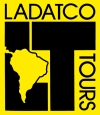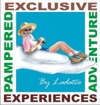

Destinations
Experiences
 |
L A
D A T C O T O U R
S |
 |
||||||||
| HOME | South America | Falkland Islands | Antarctica | Unique Destinations |
Unique Experiences |
Newsstand | ||||
 |
Barichara
|
 |
|
 |
 |
 |
|
|
|||
|
|
ABOUT BARICHARA Founded on January 25, 1705, along a once prominent trade route between Bogota and the Caribbean sea it was a prominent and prosperous Spanish town. But time passed and with the arrivals of motorized vehicles, the road built to accommodate this busy route bypassed the rugged terrain and thus Barichara. Today it has a very special "forgotten in time" authentic colonial atmosphere. And today it has a permanent population of less than 8,000. Still untouched by mass tourism, Barichara offers a quiet ambiance and the chance to explore Colombia’s colonial past: cobblestone streets built with a distinctive gold-colored local rock that almost glows in the late afternoon sun, whitewashed walls, red-tiled roofs and stunning architecture that will captivate you. And the surroundings are equally impressive: the dry nature of the Andes meets rivers and canyons creating drastic landscapes and unparalleled views of the surrounding mountains. Just a scenic drive of less than 2 hours you can be in Chicamocha National Park, home to the Chicamocha Canyon, the second largest canyon in the world, with depths of over 6560 feet.
Getting Here: |
Here are some of the things to see and do in Barichara:
Ride in a Tuk-tuk
Learn more about Barichara’s historic buildings by taking a tour with a local tuk-tuk driver. Most are based in the town’s main square with prices varying according to the tour’s duration.
Jorge Delgado Sierra Arts Park
The Jorge Delgado Sierra Arts Park is an open-air museum located next to the Santa Barbara Chapel, at the top of Barichara, overlooking the mountains and the Suarez River Canyon. In this museum, which opened in 1988, visitors can stroll along a path lined with 22 stone sculptures carved by artists from
the region and 11 countries.
Chapel of San Antonio
In Barichara, there are well-preserved, pristine stone temples at almost every corner. One of these is the chapel of San Antonio, built in 1823 and blessed in 1831. Its highlights include the wood-carved altar and the images of the Virgin of Fatima, San Antonio, and San Pedro Claver.
Church of Immaculate Conception
The sun plays with the colors of the carved stone facade of the church of the Immaculate Conception in Barichara; in the morning it looks bright yellow and in the afternoon it turns to ochre. This temple opposite the main park is thought to have been built in 1838. The altar, covered with gold leaf, and the
10 columns that support the arches are of particular interest.
The "Fat Bottomed Ant"
Eating hormigas culonas (fat-bottomed ants) is a tradition in the department of
Santander. These insects come out of the ground around April, when peasants catch and then roast them. Their strong and salty flavor is so important to the cuisine of Barichara that the town has erected two monuments dedicated to them: one at the village entrance and the other at City Hall, next to the main square.
Barochara Obsevation Point
n Barichara, hurrying is not a concern, and that's a good thing, especially when it comes to contemplating the landscapes of this area of central Santander. Located in the western part of the Suarez River Canyon, the observation point is an ideal place to appreciate the topography of the Andes in the east of the country. From here you can see the paths drawn on the mountains and marvel at the unforgettable sunsets.
Chicamocha Natioinal Park - click here for complete info
Chicamocha National Park (also known as Panachi) is an hour and a half drive from Barichara, on the road to Bucaramanga. Here visitors can see
goats and ostriches and the monument to Santandereanidad, and ride a cable car over the canyon. In fact, the four-mile cable car ride that crosses the Chicamocha river canyon is one of the Park's major attractions.
Barichara Cemetery
The clay stone hues of the Cathedral of the Immaculate Conception facade are also seen in the tombstones in the Barichara Cemetery. This site is noted for its carved stone tombs, many of them adorned with iron crosses. Here lie dozens of patiamarillos ("yellow feet"); that's what the people of Barichara are called, because of the yellow color of the streets.
Santa Barbara Chapel
The chapel of Santa Barbara is four blocks from the main square towards the top of Barichara. Sculptures of a cross and oxen ploughing the earth stand out in front of this eighteenth-century temple. This is a good place to stop and observe the rows of tile roofs in Barichara that appear to extend towards the mountains.
Handicrafts in Barichara
See the Barichara stone carvers at work when you visit local artisan workshops. Among the souvenirs you can take home are small religious statues and decorative pieces. You can also visit the Arts and Crafts Workshop, a site that preserves traditional crafts such as embroidery, weaving, and pottery.
Guane Archaeological and Paleontoligcal Museum
The village of Guane is a 15-minute drive or two-hour walk away from Barichara. You could also make the trip on horseback along the highway. On the eastern side of the square you'll find the Archaeological and Paleontological Museum. This site, created by Father Isaias Diaz Ardila in 1970, exhibits fossils that are millions of years old, along with ceramics, necklaces, and other objects made by the Guane Indians.
Visit Curiti
Curitf means "town of weavers" in the Guane language. The manufacture of potato sacks is the main business activity in this town, located about a 40- minute drive north of Barichara. Visitors can buy sisal handicrafts such as tablecloths and colorful rugs.
Adventure near Barichara
Your heart beats faster when you enjoy adventure sports in the center of Santander. In San Gil, near Barichara, travelers glide through the waters of the Fonce River on boats. The town offers a broad range of activities: horseback riding, spelunking (cave exploration), canyoneering, rappelling down waterfalls, and more.